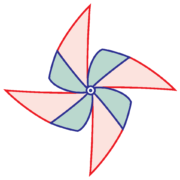Pulmonary Hypertension

The normal flow of blood through the vessels of the lung creates a healthy balance of oxygen and carbon dioxide for the body. Diseases of the blood vessels of the lung, or pulmonary vascular diseases, may impede the flow of blood through the lung or interfere with gas exchange.
Examples of Pulmonary Vascular Diseases
• Pulmonary Hypertension
• Stenosis or Hypoplasia of the Branch Pulmonary Arteries
• Stenosis or Hypoplasia of the Pulmonary Veins
• Pulmonary Arteriovenous Malformations
• Abnormal Systemic Arterial to Pulmonary Arterial Connections
• Abnormal Lymphatic Vessels of the Lung
Pulmonary hypertension, or high blood pressure in the lungs, is one of the most common and serious forms of pulmonary vascular disease. Pulmonary hypertension may result from genetic factors and several disease processes of the heart, lung, and blood. Pulmonary hypertension may also develop with no apparent precipitating factor, idiopathic disease. Pulmonary hypertension is often associated with an injury to the vessels, impaired function of the cells lining the inner surface of the vessels, excessive constriction and thickening of the middle muscular layer of the vessels, metabolic changes in the cells of the vessels, inflammation of the vessels, and abnormal growth of the vessels. The severity of disease often gets worse over time. In advanced stages of pulmonary hypertension, x-ray images of the arteries in the lung appear like the branches of a tree that have been pruned and have lost their leaves. At a microscopic level, the lumens of the smaller vessels appear very narrow, or even occluded, by changes in the vessel wall and the clotting of blood.


The right pumping chamber of the heart adapts during early stages of disease by getting more muscular and stronger to pump blood at a higher pressure through the abnormally tight lung vessels. As a result, affected patients may not experience symptoms until the disease progresses to an advanced stage. Symptoms of fatigued and shortness of breath may then be noticed during exercise or work. There is a risk of fainting with exertion when the vessels lose their ability to relax and accommodate more flow. At this stage, the vessels are like a freeway with a limited capacity for changes in traffic. Small amounts of blood, like light traffic during the night, may flow freely without any apparent obstruction. However, flow may come to a standstill when a high amount of blood flow is needed with exertion, much like the flow of heavy traffic stops during rush hour. Death may ultimately occur if the function of the right pumping chamber of the heart decreases or is no longer strong enough to pump blood through the lungs.


Pulmonary hypertension can be successfully managed if a cause is identified and corrected. There is currently no cure for pulmonary hypertension when a cause cannot be identified or corrected. However, oxygen, medications, catheter-mediated interventions, and surgical interventions may be helpful for some patients. Lung transplantation may also be an option for some patients.
Additional Resources for Pulmonary Vascular Disease in Children
Pulmonary Hypertension Association (https://phassociation.org/)
Pediatric Pulmonary Hypertension Network (http://www.pphnet.org/)
Pulmonary Vein Stenosis Network (http://www.pvsnetwork.org/)
